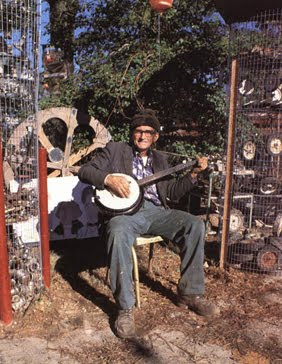I went to The Douglas Hyde Gallery to check out the Merlin James/Reverend Howard Finster exhibition.
I enjoyed Merlin James paintings, there were a few paintings I wasn't into and some that i loved but there was work there from the early 80's right up to 2010.
Merlin James is a painter of small pictures in the 'easel' tradition. He is very much aware of the history of the medium, and the weight of the past is evident in everything he paints: it is both burden and ballast in a world of postmodern relativity. But James doesn't produce nostalgia or pastiche; nor does he opt for distance or irony. There is stubbornness in his approach to painting, and determination not to be daunted by the difficulties of engaging both with the past and the present.
As a consequence, perhaps, James' paintings are not conventionally beautiful; they are unapologetically individualistic and, in many respects, difficult. The nonconformist quality of his work (which should not be confused with occasional elements of an 'outsider' sensibility) is reflected by his enthusiasm, as a writer and sometimes curator, for painters such as Jean Helion, William Nicholson, Giorgio Morandi and Serge Charchoune - artists often overshadowed by the reputations of better-known peers.
The Reverend Howard Finster exhibition was so interestng, I would love to see some of his paintings but his
'message' posters were on view and they were amazing.
'
The American artist Howard Finster (December 2, 1916 – October 22, 2001), believing that he was inspired by God to spread the Gospel, built an extraordinary Paradise Garden in Georgia, and produced tens of thousands of works of art. He first came to prominence in the 1980s, when his work was used on record covers by R.E.M. and Talking Heads. He is now probably the best-known 'outsider' artist of recent times.
Finster's art includes paintings of icons of American culture such as Elvis Presley, George Washington, Marilyn Monroe, and Coca-Cola bottles, but the majority of his work was overtly religious. Every piece was numbered by the artist, who considered it important to produce as much art as he could for the glory of God.
These are some of his paintings.........











